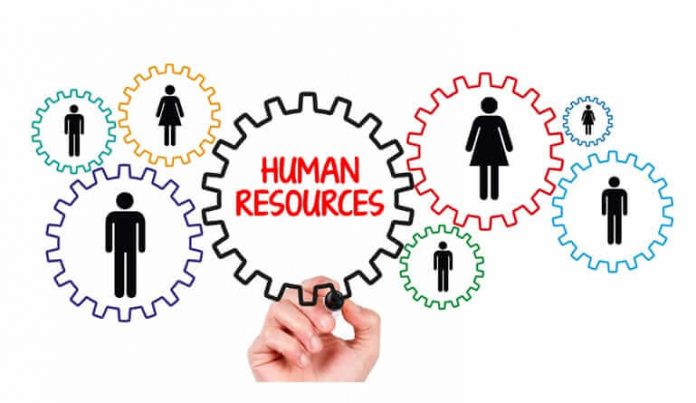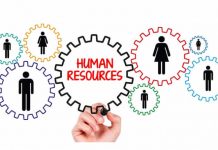This article is written by Vinny pursuing Diploma in Labour, Employment and Industrial Laws for HR Managers.
This article has been published by Sneha Mahawar.
Table of Contents
Introduction
This writing aims to provide an overview of the concept of e-HR, discuss the adoption of technology in recruitment, learning, and development, compliance, employee engagement, and performance management, advantage and limitation of e-HR.
Understanding e-HR
The term e-HR means managing Human Resources through the support of web-technology-based tools. Innovation in IT enables easy interactions between employees and employers. The objective of e-HR is to make information easily accessible to employees and employers. The application of technology in HR brings the greatest advantage in the HR processes, such as HR recruitment and selection, performance evaluation, performance appraisal, compensation, benefits, training, and development.
To understand the concept of e-HR, let’s consider an example,
Let us say Mr. Madhav is the owner of XYZ consultancy. He has been running this recruitment agency for the last two years. He has three employees in his organisation. Mr. Keshav and Ms. Krisha are business development executives and digital marketers, respectively.
Ms. Vrida is an HR executive who is handling the end-to-end recruitment process. From posting jobs to onboarding candidates, Vrida is part of the entire recruitment process. She is using google sheets to maintain the database of candidates. This google sheet contains a database of candidates – contact details, highest educational qualifications, previous/ current organization details, current salary, expectation, notice period, and last date of contact. She can track the stage of candidates on the same spreadsheet. Also, she can add the reason for declining candidates. This information allows her to keep track of candidates and helps to analyze the hiring data. Since Google Sheets / Excel is easy to use and most affordable, organizations widely use them in recruitment. HRs can easily store data.
Initially, when Vrida started, it was easy to track hiring data as candidates’ data, clients, and job roles were limited. After a few months, candidates’ data increased, and the recruitment agency started hiring for multiple job roles. And there are limitations to google sheets. It gets slower when data gets enormous. There are a lot of tabs in google sheets. Tracking hiring data sometimes becomes really time-consuming.
Vrinda has to use formulas to generate reports and analyze data in Google Sheets/ Excel. There is no customised dashboard where she can find desired results in a few clicks. Searching for data takes time. Google Sheets/ Excel lacks dashboards that allow recruiters and companies’ managers to interact and decide about the hiring process. Enormous data can also cause data duplicacy in spreadsheets.
Although many business owners like Mr. Madhav and HRs like Ms. Vrinda use Excel and Google sheets in the recruitment process, they lack multiple features and are outdated. This takes a long time to hire. With application-tracking systems and cloud-based solutions, hiring processes are speeding up and becoming more efficient.
Application of e-HR technology in human resource processes
Role of e-HR technology in Recruitment
Technology plays a significant role in identifying hiring needs and onboarding new employees, thus, helping in finding the right talent to expand businesses.
Writing job descriptions
The first thing that candidates read before applying for any job is the job description. It not only communicates the roles and responsibilities of a job position but also tells about the perks and benefits that candidates will get after joining that role.
Your job descriptions will determine the types of candidates that apply to the job role. As an HR, you often need to speed up hours to understand the job role and then draft job descriptions. This process can be very time-consuming. But with the help of technology, we can save this time and build better & effective JDs. Just you have to add job titles and skills, and AI will generate a job description for you.
Promoting job postings on social media
Social media is becoming a job-seeking platform where a job seeker can learn new skills, network with organizations, research more about companies, and search for new jobs. Brands are widely using social media platforms to build strong connections with people that will help them to attract good talent.
Screening resumes through Application Tracking System
When a larger pool of applicants apply for different positions, it becomes hard to rank candidates based on their skills and experience. With ATS ( or Application Tracking System), HR can screen thousands of applicants based on requirements set by an organization. The best ATS software uses AI to look for keywords that help to analyze hiring data. Moreover, job seekers can easily apply for ATS software from mobile devices. An ATS is a platform where HR can access multiple job roles, track all applicants’ resumes and applications, schedule interviews, and track status.
Enhancing interview process
Gone are the days when organizations conducted only physical or walk-in interviews. Even small organizations have started conducting interviews through Zoom and Google Meet. That saves the traveling time of employees. As a result, it reduces the overall time in conducting interviews. Thus, saving employers time, and they can fill positions faster.
Automating onboarding new employees
Onboarding involves a lot of repetitive tasks. AI-enabled systems in the onboarding process can automate repetitive tasks and reduce errors.
- Maintain employee data in one place – With the help of automation, companies can gather and maintain employees’ data more efficiently. AI will help the organization to analyze this data in a better way during the process of onboarding. Let us say, if companies take employees’ salary slips during the onboarding process, then AI will help them to distinguish new employees on the basis of salary brackets. That will help organizations in the next step of paperwork or legalities. This process will be conducted in a more streamlined manner.
- Training and development – The organization can personalized training programs with Learning Management Systems. Employees can learn according to their learning pace and styles. Thus, enabling training more efficiently for employees and organizations. Organizations can track the whole employee’s progress and performance through learning platforms.
- Onboarding checklist – On the first day of joining, employees have introductions, orientation sessions, submission of essential documents, and signing up for different accounts. AI software can help to automate the onboarding checklist and make things easier to track and follow.
- Chatbots – HR Chatbots is a virtual assistant that enables the organization to automate processes like scheduling interviews, managing employee referrals, providing valuable feedback, sharing learning courses, answering all new hires’ FAQs, and much more.
Role of e-HR technology in learning and development
Learning and development (L&D) are one of the primary responsibilities of the HR department of any organization, helping to enhance work culture, bridge skill gaps, and increase retention rates of the employees. The purpose of L&D is the growth of employees with knowledge and skill that ultimately leads to organizational success.
Let us discuss how technology impacts the L&D of the employees at the workplace.
Mobile learning
Mobile learning is the most convenient form of learning. Employees can easily access learning tools whenever they have time to learn. Now the gig economy is rising, and many freelancers are also associated with organizations. That makes learning easy for employees who live in different parts of the world.
Microlearning
Microlearning is most effective and highly beneficial for learners. A difficult concept when broken into small chunks of learning, makes it easy for employees to consume in a shorter time. Many organizations have done tie-ups with learning platforms, making training programs quick and effective.
Gamification
It is the process of including game elements in non-game contexts to engage users. Learning software also contains game elements. These elements provide better engagement and retention of content. That will help to energize boring training programs and make the learning of employees fun and effective.
AI enhanced learning
Psychometric analysis shows that every employee has a different learning style. Organizations are also acknowledging this and developing learning content that suits the learning style of employees. AI is helping the organization in designing training modules that fulfil the needs of employees. It will help to track the progress of each employee.
Role of e-HR technology in compliances
For Indian businesses to fully comply with laws usually need highly professional HR, chartered accountants, or legal firms. Many small businesses do not have money to afford these professionals, and their organizations are not fully compliant with labour laws. As a result, huge penalties are imposed on them. Thanks to HR technology, small organizations can make their work easy. HR apps can help in PF, ESI, PT, bonus, and gratuity calculations, generating challans, reminding of the due date of compliances. Thus, keeping small businesses compliant with labour laws.
Role of e-HR technology in employee engagement
Employee engagement is the level of involvement, dedication, and commitment employees have in their work and workplace. Technological advancements within the workplace are enabling companies to enhance communication with employees. Below is a list of different ways that technology is improving employee engagement.
Digital reward system
Offering rewards is one of the best ways to make employees feel that their efforts and work are valued. Post-Covid, many organizations are working remotely or hybrid. They have started digital reward systems that include Amazon vouchers, Spotify or Apple Music subscriptions, technology and workspace upgrades, and virtual courses to keep employee engagement high.
Eliminates bias
Employees belong to diverse cultures, have different opinions, and have different work potentials. They might witness some kind of discrimination or favouritism in the organization that can dip the motivation level of employees. With performance management tools, the employer can track performance, get authentic feedback, and reward employees accordingly. Thus, technological advancement will not only help in business but also improve employees’ experience and promote employee engagement.
Utilizing cloud computing technology
Data security is always a big concern for the organization. They can implement cloud computing technologies in their workplace that will enable them to store, transfer, and access files and software through the internet. Thus, employees can access data anywhere and anytime and save costs on purchasing too many subscriptions.
Social engagement within the workplace
Since employees are one of the best spokespeople for the organization and their brand, employees engaging socially with each other is an opportunity for the organization to create brand awareness. It enables the development of connections with other employees beyond professional relations. Technology makes it easier to plan and conduct team-building exercises and group chilling sessions, helping the management and the employees to connect and unwind together.
Role of e-HR technology in performance management
Performance management is a process of continuous communication and feedback that helps managers to evaluate employees’ work. Organizations are adapting to technologies and are using performance management systems to track employee performance.
Track vital talent metrics
Organizations must track talent who is performing best in their work. It is the responsibility of HR managers to review and evaluate performance, identify and fill talent gaps, retain top talent and intervene before employees plan to leave the organization. The latest tools and software enable the tracking of talent metrics regularly so that managers can make strategic decisions.
Collect and share continuous feedback
Feedback helps to break bad habits, increases our self-awareness, improves job performance, and encourages employees to work more effectively. There are plenty of great tools like Zoho which are helping the organization set up an employee feedback system. They can implement feedback loops throughout the lifecycle of an employee, i.e., from recruitment to exit.
Using mobile apps for team management
Most organizations are adopting remote and hybrid work modes, and using team management tools on mobile apps is an effective way to manage team productivity. It enables collaboration, communication, and management of teams in one place. Team schedules, communication, and detailed reporting are helping to improve productivity and work quality.
Limitations associated with e-HR technology
Maintaining and implementing HR tools and software can be expensive. Generally, HRs have to input manual data into HR management systems. If there are any data errors, that can lead to grave consequences. Some employees need personal support. These systems are not apt for them. Implementing technological innovations in the organization requires acceptance from the workforce. That can be time-consuming. Before implementing any HR tools and software, organizations invest in training programs to train the workforce. Organizations might lose talent in recruitment if HRs are not competent with the latest technology. That can cost massive amounts of money to the organizations. The HR management system is prone to hacking/ data losses. Make sure that the person responsible for it is technologically sound enough.
Conclusion
There have been many innovations in the field of HR. The initial beneficiaries of HR tools and management systems are the people who are educated and employed in white-collar jobs. Organizations hire blue-collar employees, and unorganized job sectors lack educated employees and adequate resources. So, they are unable to implement innovations in HR systems. Today the internet has become an essential tool for data sharing, communication, and knowledge. With the increase in the number of internet users, education is becoming easily accessible to everyone, irrespective of social class. Education will only help to bridge this skill gap. Thus, education will make people more skillful, and implementation will become better and more effective in the future. Till then, it is best if HR managers rely on a combination of e-HR technologies and doing things the traditional way.
References
- https://thestartuplab.in/hr-tech-startups-in-india-a-complete-guide-about-the-hr-tech-industry-in-india/
- https://www.manatal.com/blog/recruitment-saas-excel-google-sheets
- https://blog.hrtechnologyconference.com/how-is-technology-used-in-the-recruitment-process
- https://www.quantumworkplace.com/future-of-work/performance-management-system-questions
- https://bernardmarr.com/key-tools-and-techniques-for-performance-management/
- https://novoed.com/resources/blog/learning-development-technology-clo/
- https://leena.ai/blog/ai-employee-onboarding/#:~:text=Overall%2C%20AI%20simplifies%20the%20onboarding,brought%20about%20by%20new%20hires.
- https://trainingindustry.com/articles/learning-technologies/3-technologies-to-use-in-learning-and-development-in-2021-spon-tesseract/
- https://smallbusiness.chron.com/advantages-disadvantages-using-internet-employee-recruitment-19049.html
- https://www.allresearchjournal.com/archives/2018/vol4issue4/PartB/5-7-11-410.pdf
- https://www.ukessays.com/essays/human-resources/what-e-hr.php
- https://www.iedunote.com/e-hrm
- https://www.careerride.com/e-HRM-interview-questions.aspx
Students of Lawsikho courses regularly produce writing assignments and work on practical exercises as a part of their coursework and develop themselves in real-life practical skills.
LawSikho has created a telegram group for exchanging legal knowledge, referrals, and various opportunities. You can click on this link and join:
Follow us on Instagram and subscribe to our YouTube channel for more amazing legal content.
 Serato DJ Crack 2025Serato DJ PRO Crack
Serato DJ Crack 2025Serato DJ PRO Crack











 Allow notifications
Allow notifications



